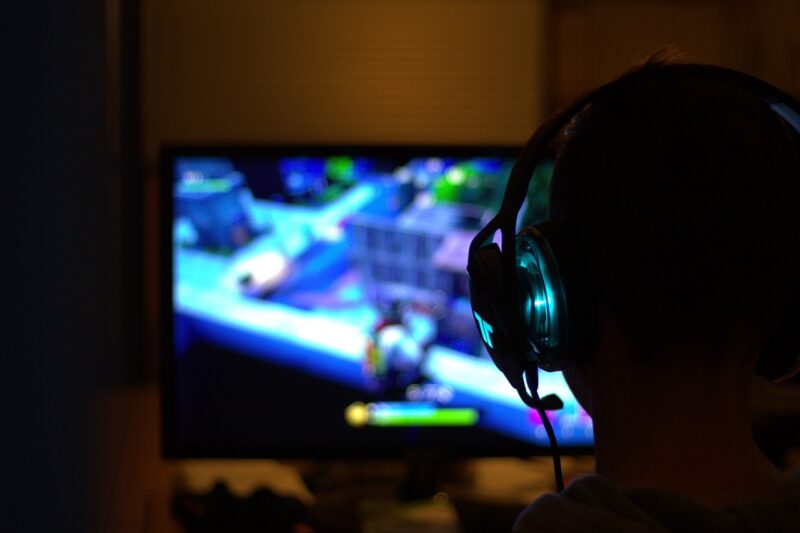
Nostalgia is a powerful emotional response that can transport us back to simpler times and invoke fond memories of experiences gone by. In recent years, this feeling has seen a resurgence in the world of video games, leading to a surge in remasters and remakes of beloved classics. From old-school platformers to landmark role-playing games, the gaming industry is revisiting the titles that shaped our childhoods and leading a new generation on these nostalgic journeys.
1. The Rise of Remasters and Remakes
The gaming industry has witnessed its fair share of innovations and evolutions, but few trends have been as embraced as the rise of remasters and remakes. There is no denying that nostalgia plays a significant role in this phenomenon. With players clamoring for a return to the games that defined their formative years, game developers have responded in kind by revamping classic titles and giving them new life.
Gaming consoles like the Nintendo Switch, PlayStation 5, and Xbox Series X have proven to be platforms that host these remastered games flawlessly, bringing forward improved graphics, modern gameplay mechanics, and enhanced audio quality that resonate with both long-time fans and newcomers alike.
2. The Emotional Connection of Nostalgia
Nostalgia is more than just a sentimental feeling; it has psychological implications that evoke happiness and comfort. According to research in psychology, nostalgic experiences can act as a source of social connectedness and a positive self-concept. For gamers, the games they played in their youth often represent a time of joy, exploration, and creativity.
Countless players reminisce about the heart-pumping thrill of defeating their first boss in “Final Fantasy VII” or the delightful puzzle-solving experience in “Legend of Zelda: Ocarina of Time.” At its core, nostalgia serves as an emotional bridge to the past, enticing gamers to seek out the remade or remastered versions of these classic experiences.
Thus, the impact of nostalgia often drives the sales of these products, with companies capitalizing on the emotional investment players have with older titles. This paints a clear picture: when game developers revive classics, they’re tapping into an established fanbase that’s ready to dive back into their cherished memories.
3. Notable Examples of Successful Remakes
A number of remasters and remakes have gained immense popularity, showcasing the tangible power of nostalgia in the gaming industry. Here are some standout titles:
– Resident Evil 2 (2019): This horror classic was completely overhauled, swapping the fixed camera angles for a modern over-the-shoulder perspective. The remake was praised for its ability to maintain the spirit of the original while introducing fresh mechanics and visuals. Players often cite Resident Evil 2 as a perfect example of what a remake should be—an amalgamation of nostalgia with modern gaming innovations.
– Final Fantasy VII Remake (2020): The original game set the standard for RPGs upon its release in 1997. The remake not only updated the graphics but also expanded upon the narrative, resulting in a game that stands on its own yet pays homage to the original in immersive and exciting ways.
– The Legend of Zelda: Link’s Awakening (2019): This beautifully reimagined remake maintained the whimsical charm of the 1993 Game Boy classic, but it also utilized adorable diorama-style graphics that captivated new audiences while still resonating with nostalgic players.
These examples illustrate how creative reinvention can breathe new life into classic games while preserving the core essence that made them beloved in the first place.
4. Remasters: Elevating Classic Experiences
While remakes involve substantial alterations to gameplay mechanics and visual presentation, remasters often focus on polishing existing materials. Remastering a game includes enhancing graphics to better suit modern displays, improving sound quality, and incorporating quality-of-life features like updated controls.
Here are a few examples of notable remasters that showcase the trend:
– Halo: The Master Chief Collection: This compilation brought together celebrated entries in the Halo franchise, presenting improved graphics and smoother performance for a fresh experience.
– Crash Team Racing Nitro-Fueled: A remaster of the beloved racing title retained the charming aesthetics while arriving with enhanced visuals and revamped gameplay mechanics, rekindling joy for long-time fans.
– The Bioshock Collection: Offering the original three titles in one complete package, complete with upgraded graphics, the collection allows a new generation to experience the beloved franchise while catering to older audiences.
By remastering cherished classics, developers give gamers the chance to experience old favorites on new hardware while making the games more accessible for those who may never have experienced them before.
5. Challenges of Remastering and Remaking Games
Despite their popularity, remastering and remaking beloved games comes with its own set of challenges. Striking the right balance between nostalgia and innovation is paramount. Developers must remain respectful of the original material while adapting it for modern audiences. This requires:
– Understanding the Original: Developers must understand what made the original so special to begin with. This includes recognizing the artistic choices, storytelling techniques, and gameplay mechanics that resonated with players.
– Implementing Modern Mechanics: The challenge is not only to stay faithful to the source material but also to incorporate new features that improve gameplay. While some resources argue against altering a classic game, modern audiences often expect certain standards that can unintentionally diminish the experience if neglected.
– Managing Expectations: Developers must carefully navigate the expectations of a core audience who remembers the original fondly while also appealing to new players who may be experiencing the title for the first time. This can be a tightrope walk that can lead to both praise and backlash.
Ultimately, the success of a remaster or remake lies in its execution, and developers must tread delicately to bring the past into the present without compromising the emotional connection that players share with the original.
6. The Future of Nostalgic Video Games
As the landscape of gaming continues to evolve, we can expect the trend of remasters and remakes to persist. Nostalgia plays a crucial role in driving sales and interest, illuminating the pathway for companies to revisit past successes.
With each generation of consoles, it is likely that more classics will be painstakingly reimagined for new audiences while honoring the originals. Emerging technologies, such as virtual reality (VR) and augmented reality (AR), also provide the potential to reinterpret beloved games in exciting new ways, offering players fresh experiences grounded in nostalgia.
As nostalgic gaming flourishes, communities will inevitably form around these titles, encouraging multiplayer experiences and creating a vibrant social aspect that further sustain its legacy. This indicates that the nostalgic bond between players and their favorite titles will continue evolving, reminding us of the integral place these games hold in our lives.
Conclusion
The emotional connection players have to video games is profound, and nostalgia remains a driving force in the gaming industry. As remakes and remasters continue to thrive, they’ll undoubtedly captivate both old and new gamers alike, providing opportunities to relive cherished memories while also inviting new players into these extraordinary worlds. Not only does nostalgia act as a fuel for creativity within the gaming industry, but it also fosters a community of shared experiences that transcend generations. As long as memories remain, the allure of reminiscing about the past will continue to shape the future of gaming.








